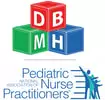Adolescent Screens
- CRAFFT for alcohol and drug screening in clinic
- Guidelines for Adolescent Preventive Services (GAPS) for ages 11-21, addresses biomedical, behavioral, psychosocial domains (AMA)
- HEADSS for adolescent psychosocial assessment (full guide found here)
- TeenScreen Primary Care -- Overview for PSC-Y, PHQ-9, and CRAFFT
- SBIRT course: Introduction to SBIRT for adolescents. A free self-paced video based online course designed to teach providers the basics of screening, brief intervention and referral to treatment for their adolescent patients. eight content videos that range from 12-17 minutes in length, totaling approximately two and a half hours of video. Each video is followed by a short quiz with a total of 15 questions. The course does NOT need to be completed in one sitting and should take you three to four hours.
- NIAAA Practitioner's Guide: Screening and Brief Intervention for Youth. Free Resources full guide and pocket guides can be downloaded or ordered
Adolescent Quick Links
|
Anxiety disorders
Dissociative Identity Disorder
|
Eating disorders
Gender Dysphoria (formerly gender identity disorder)
Habit Disorders
Learning disabilities
|
Adolescent Considerations
- Adolescent Health Care 101, by Adolescent Health Working Group (AHWG)
- Bright Futures: Adolescence -- free guide file
Mental Health and Wellbeing
- Behavioral Health Toolkit -- by AHWG
- Trauma and Resilience -- by AHWG
- The Amazing Brain -- Alaska Family Violence Project
- National Institute of Mental Health
- American Academy of Child and Adolescent Psychiatry
Sexual Health/Identity
- Sexual Health History
- Sexual Health Toolkit -- by AHWG
- Hanging Out or Hooking Up -- by Futures Without Violence
- Families are Talking -- family support to talk about sex
- Family Acceptance Project -- family support for LGBT youth
Books
|
FOR TEENS
|
FOR PARENTS
|
